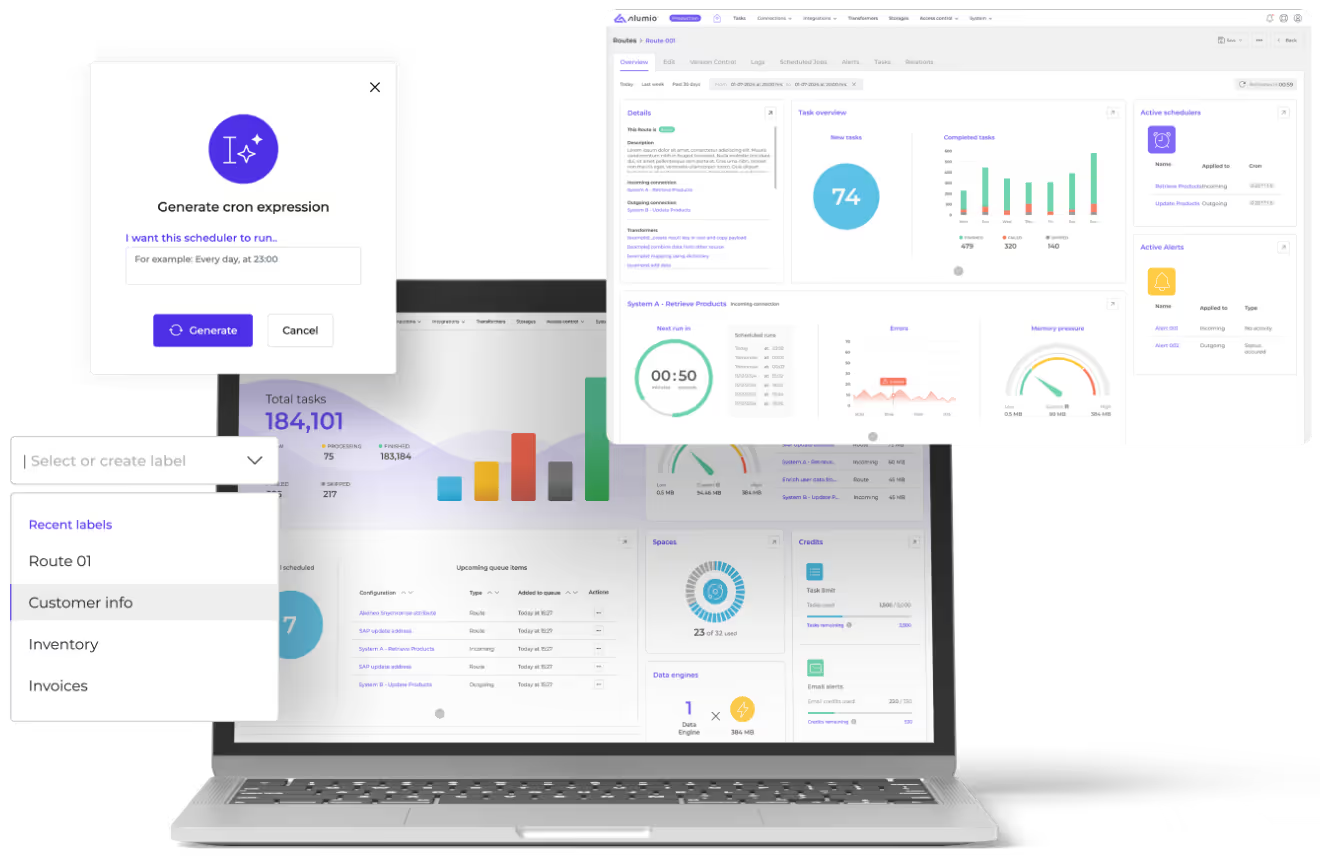Simplifying Digital Transformation with the Alumio iPaaS
Digital transformation: is there a bypass to the hassles of achieving it?
Spoiler Alert: It’s called the Alumio iPaaS!

As per a recent Gartner survey, 72% of Data & Analytics leaders are heavily involved in digital transformation initiatives."
Digital transformation has gone from being a buzzword to a watchword for every big or mid-sized enterprise. That message rings loud & clear from every study, discussion, and expert opinion about how companies can maintain their competitive edge and relevancy as the world evolves in the digital era. However, many business leaders are still unsure about what digital transformation fully entails.
Why are businesses investing in digital transformation?

97% of companies say the COVID-19 pandemic sped up their digital transformation initiatives.”
While a business can embark on its digital transformation journey for many reasons, the spur in this regard is currently fueled by a survival instinct. To understand why, we needn’t look further than the recent Covid-19 pandemic and how it affected businesses worldwide, especially the ones that weren’t digitally able. In the aftermath of the pandemic, a business’s ability to quickly adjust to supply chain disruptions, time-to-market pressures, and rapidly transforming customer expectations has come under the lens.
Yet survivability factors aside, the strategic advantage of pursuing digital transformation initiatives is to improve and automate business processes, enhance customer experiences, ease communication and data exchange, push productivity limits, and boost overall profitability. If the company is aspirational, the transformation efforts revolve around the idea of becoming future-ready and capable of integrating emerging technologies like AI (Artificial Intelligence) and ML (Machine Learning).
So, what is Digital Transformation?
The short answer: digital transformation is all about integration!
The long answer: digital transformation involves integrating business processes, company culture, and customer experiences with digital technology. It also means adopting a 'Digital First’ approach with any new solution a business develops or problems they attempt to solve. In other words, it isn’t a one-time thing and involves successive digital transformations of business processes at different stages.
However, is it enough to make services available online or modernize legacy systems to achieve digital transformation successfully? Implementing multiple new technologies, applications, and SaaS (Software as a Service) solutions in an organization is now a minor part of the plot; getting them to all work together and seamlessly share data is a major part of the digital transformation story.

45% respondents in procurement cite poor integration as the second main barrier to the effective application of digital technology”















